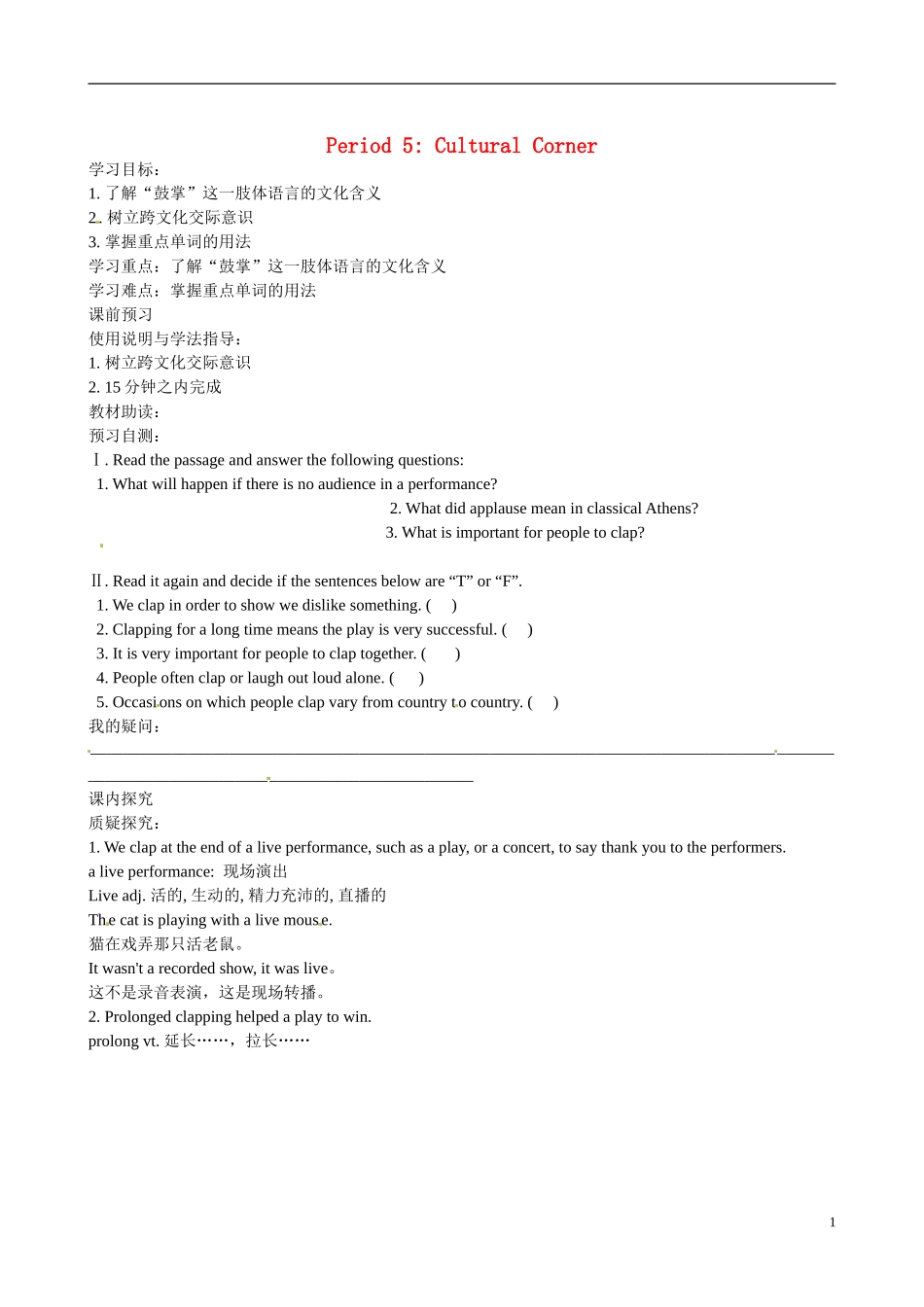Period 5: Cultural Corner学习目标:1. 了解“鼓掌”这一肢体语言的文化含义2. 树立跨文化交际意识3. 掌握重点单词的用法学习重点:了解“鼓掌”这一肢体语言的文化含义学习难点:掌握重点单词的用法课前预习使用说明与学法指导:1. 树立跨文化交际意识2. 15 分钟之内完成教材助读:预习自测:Ⅰ. Read the passage and answer the following questions: 1. What will happen if there is no audience in a performance? 2. What did applause mean in classical Athens? 3. What is important for people to clap? Ⅱ. Read it again and decide if the sentences below are “T” or “F”. 1. We clap in order to show we dislike something. ( ) 2. Clapping for a long time means the play is very successful. ( ) 3. It is very important for people to clap together. ( ) 4. People often clap or laugh out loud alone. ( ) 5. Occasions on which people clap vary from country t o country. ( )我的疑问:__________________________________________________________________________________________________________________________________________课内探究质疑探究:1. We clap at the end of a live performance, such as a play, or a concert, to say thank you to the performers. a live performance: 现场演出Live adj. 活的, 生动的, 精力充沛的, 直播的The cat is playing with a live mous e. 猫在戏弄那只活老鼠。 It wasn't a recorded show, it was live。 这不是录音表演,这是现场转播。 2. Prolonged clapping helped a play to win. prolong vt. 延长……,拉长……13. mean doing 意味着做某事 mean to do sth 打算做某事 4. Applause was a sign of being part of the community, and of equality between actors and audience. equality: n. 同等,平等例句与用法: 1. I do not believe in equality of capacity, but I do believe in equality of opportunity. 我不相信能力均等,但我确实相信机会均等。 2. Women are still struggling for true ...

